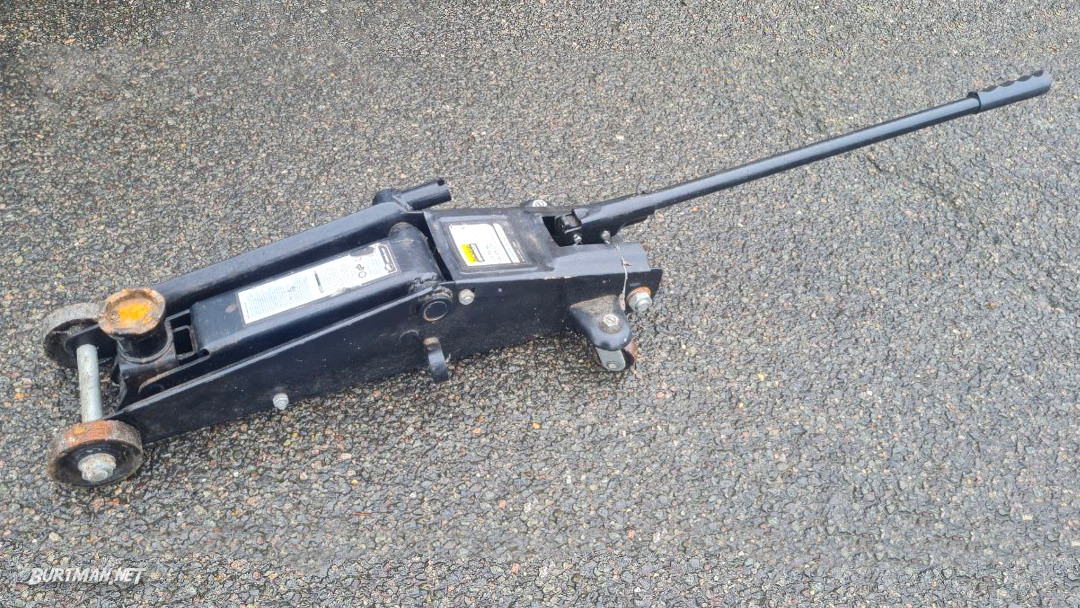Trolley Jack
AKA: Flatbed Jack, Heavy Duty Jack
Never work under a vehicle that is supported only by a jack. Always use axle stands to take the weight of the vehicle. Jacks can fail under weight, or because of damage, wear, bad surface quality and so on. The results can be fatal. Always check your jack for signs of excessive wear or damage before using, and lift your vehicle on a flat surface, using the correct jacking points. If you don't know where the jacking points are, consult your owner's manual or look it up online BEFORE using the jack.
When releasing the jack, turn the locking nut very slowly to make sure the pressure is released gently. As soon as the pressure is released, your vehicle will start to come down. Do not rush this process. If you are not sure, check the jacking section of the wheel changing article (link in the details below).
The heaviest and most stable type of jack, recommended for all jobs if accessible. To use the trolley jack, locate the correct jacking points, and roll the lowered jack into place beneath the correct one for the job you are performing. Using the jack handle's notched end, firmly tighten the pressure release valve located below the handle insert.
Put the handle into the handle insert and lift it up. Applying downward pressure will lift the jack by a small amount. Repeat until the vehicle is at the appropriate height and then place and axle stand under a suitable solid part such as the axle, chassis or wishbone joint.
Lower the jack by removing the handle from the handle insert and carefully loosening the pressure valve. Once the vehicle is resting on the axle stand, undo the valve further and allow the jack to come down. You can now remove the jack.
Sometimes, the trolley jack is too big to get into the spot that you need to reach, so a smaller type of jack is necessary. See Bottle Jack as a reliable alternative.






 Back To Tool List
Back To Tool List